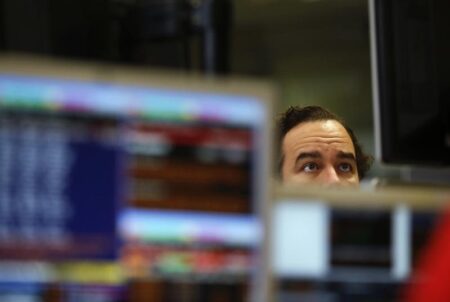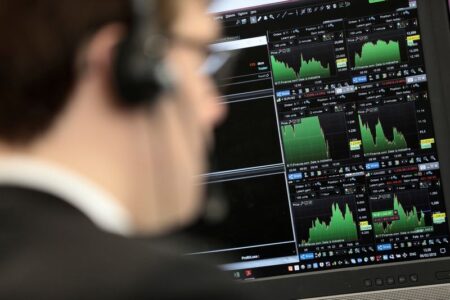By Chuck Mikolajczak
(Reuters) – U.S. stocks rose modestly in choppy trade on Tuesday as investors gauged inflation data and braced for quarterly earnings reports to justify stock valuations and the strength of the U.S. economy.
Stocks received an initial lift after a Labor Department report showed the producer price index rose less than expected in December, but the report failed to sway expectations about the Federal Reserve’s likely path of monetary policy this year.
Early gains evaporated and each of the three major indexes briefly went lower as investors awaited Wednesday’s consumer price index reading, which will further shape expectations for inflation and the Fed.
“There was a relief rally early but it goes to show that there is an inherent level of uncertainty out there about where rates and the Fed is headed,” said Chris Fasciano, chief market strategist at Commonwealth Financial Network.
“Now we’ll see what tomorrow morning brings,” he said, referring to the CPI report.
The rose 197.27 points, or 0.47%, to 42,495.92, the gained 17.16 points, or 0.30%, to 5,853.64 and the gained 37.38 points, or 0.20%, to 19,125.48.
The market is pricing in about 29 basis points in rate cuts from the Fed by the end of 2025, according to LSEG data, with expectations for a cut of at least 25 bps not rising above 50% until the June meeting.
Adding to investor caution, U.S. Treasury yields remained at elevated levels, with the yield on the benchmark 10-year Treasury note at 4.797%, holding near a 14-month high.
Quarterly earnings get under way on Wednesday with results from big banks, which are expected to post stronger profits, fueled by robust dealmaking and trading. The S&P 500 bank index climbed 1.3%.
The benchmark S&P 500 is trading at valuations well above its historical long-term average and a disappointing earnings season could put further gains for equities in jeopardy.
Healthcare was the worst performing of the 11 major S&P sectors as Eli Lilly (NYSE:) stumbled 6.7% after it forecast fourth-quarter sales of weight-loss drug Zepbound below estimates.
Kansas City Fed president Jeff Schmid said the impact of Trump’s policies was an “active conversation” at the central bank and that it would respond if either its inflation or employment goals are pushed off course.
After rallying following the U.S. election, stocks have struggled recently, with the S&P 500 falling in four of the previous five weeks as a resilient economy, nagging inflation and comments from Fed policymakers have fueled worries about the central bank being less aggressive in cutting interest rates than previously anticipated.
Concerns about potential tariffs from the Trump administration that would further stoke inflation have also lingered.
Boeing (NYSE:) fell 2% after the planemaker’s annual deliveries dropped in 2024 to their lowest level since the pandemic.
Advancing issues outnumbered decliners by a 2.9-to-1 ratio on the NYSE and by a 1.5-to-1 ratio on the Nasdaq.
The S&P 500 posted eight new 52-week highs and five new lows, while the Nasdaq Composite recorded 34 new highs and 119 new lows.
Read the full article here
















